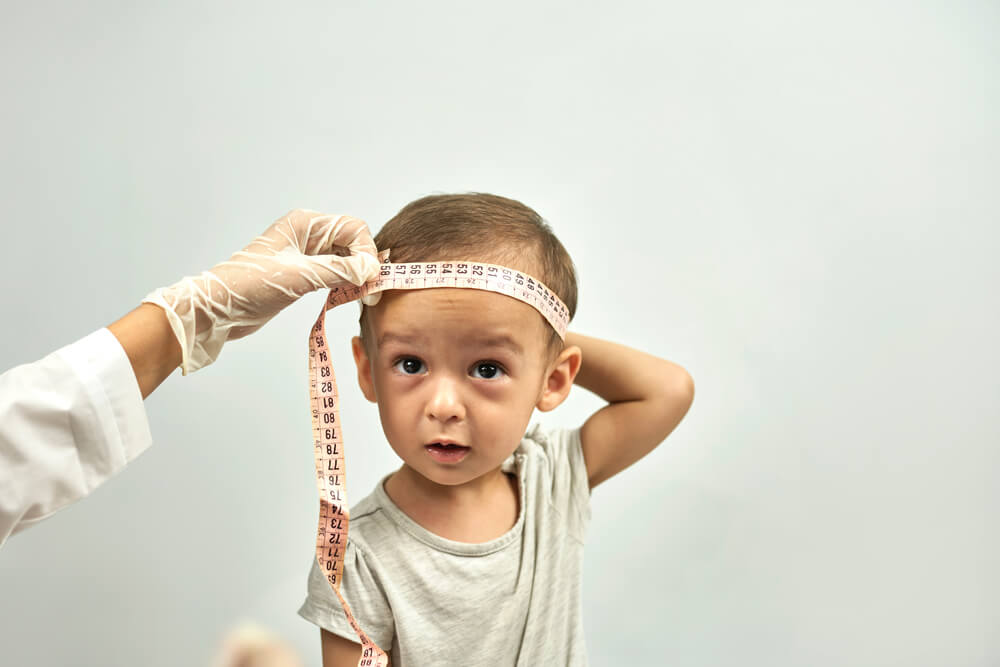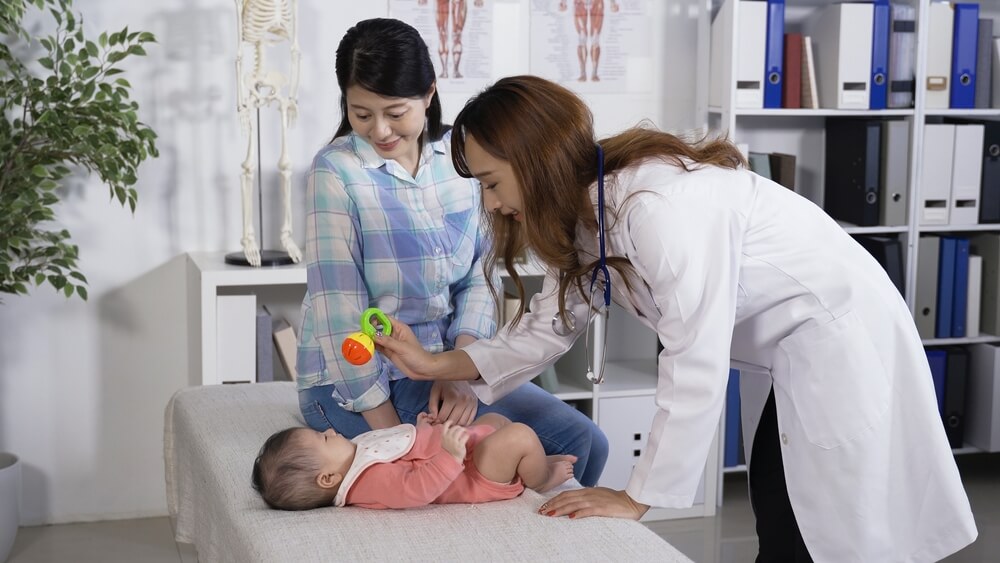Your child’s health is a priority, and keeping track of baby development will help you know if everything’s going according to plan. That’s all fine and dandy, but what do these well-baby visits look like? When should you book the baby check-up schedule? Fortunately, we’ve gathered the most important facts on well-baby visits to bring you expert-approved facts on monitoring baby development.
That said, only a licensed professional should perform a well baby exam. Make sure you choose the right healthcare provider for maximum results.
What does the well-baby exam look like? Which baby vaccines are mandatory? Keep on reading to find out.
What is a Well-Baby Exam?
Well-baby visits are important to monitor your child’s development. Since babies go through numerous changes as they grow, well-baby visits are crucial from the very start. This means that your pediatrician will possibly recommend the first exam within only three days after birth. After that, your baby may need more well-baby visits each week and later every couple of months (during the first year). Sometimes, your baby may require additional, more frequent visits to your pediatrician.
Your doctor will discuss your child’s growth compared to usual developmental milestones during each baby check-up schedule. You’ll also learn about your baby’s overall health and, if necessary, how to improve it. For example, some children may need to be fed differently to avoid childhood obesity.
How to Track Baby Development?

Tracking baby development is important, and depending on your child’s age, you may need to answer some of the following questions.
For example, is your baby cooing or smiling? Is your baby reaching for random objects? Is your baby noticing and turning toward sounds and sights? Does your child attempt to roll over? Can your baby sit without help? Is your baby imitating sounds that you make?
Always answer these questions honestly and openly. That said, baby development and the child’s motor skills will vary from one child to the next.
One of the simplest ways to track baby development is to be mindful and present with your child. Look for developmental milestones such as sitting up without support, cooing, and smiling. Nevertheless, if your baby doesn’t reach these milestones in the expected time, worry not – this doesn’t mean that there is something wrong with your child. For expert advice, consult your pediatrician.
Well-Baby Visits: Everything You Need to Know
The baby check-up schedule is coming up, and you don’t know what to expect. Here are some must-know facts about well-baby visits.
Overall, your baby’s exam will be tailored to their unique needs. Some of these may include:
- Listening to the baby’s heart and lungs
- Reviewing blood pressure levels
- Checking vision and hearing
- Checking tongue, eyes, ears, feet, teeth, and hands
- Measuring head circumference, weight, and height
- Capturing BMI or body mass index
- Examining internal organs by feeling and doing urine and blood tests
Before every well-baby exam, make sure you are adequately prepared. Be ready to answer questions about your baby’s sleep schedule, safety issues, and family medical history. Your doctor may also discuss childhood diseases and dietary changes.
Your doctor will likely begin by taking measurements of the baby:
- You will need to undress the baby so that it can be weighed. The pediatrician will also measure length by placing the baby on a flat surface.
- They will stretch out the baby’s legs and use tape to analyze the head circumference. These measurements will be used to create the child’s growth curve.
- Your doctor will utilize this growth curve to see whether your baby develops properly.
- The professional will compare your child’s growth to the standard developmental milestones of other children of the same age.
Well-Baby Exam Steps
After this, you may expect a regular head-to-toe physical exam. This is the perfect time to mention any health concerns you may have related to your baby. Your doctor will begin with the basics, starting from the head. Soft spots or fontanels will be routinely checked. In normal cases, the small spot at the baby’s back of the head closes by age two to three months, while the large spot at the front closes around eighteen months. Again, these are rough estimates.
The ears and the eyes follow. The pediatrician will use a special instrument or an otoscope to see if your baby has an ear infection or excess fluid. Moreover, your doctor may check your child’s response to sounds such as the mother’s or father’s voice. Finally, an ophthalmoscope is used to check the baby’s eyesight.
The pediatrician will also check the mouth for a cleft palate or an opening. The doctor may notice yeast infection signs or oral thrush by looking inside your child’s mouth. As the baby grows, the doctor may also see increased chewing and drooling (common teething symptoms).
The skin is our largest organ, so naturally, the professional will also examine your baby for any skin conditions, rashes, and birthmarks.
Analyzing the health of your baby’s lungs and heart is also crucial. The expert will utilize a stethoscope to check for breathing problems, irregular heart sounds or murmurs, and unusual rhythms. Although heart murmurs are typically harmless, sometimes they are a medical condition symptom. Therefore, it’s always best to consult with a specialist.
The abdomen, hips, and legs follow, and the doctor will check these body parts for any unusual masses, tenderness, or dislocation.
Finally, the pediatrician will look at the baby’s genitalia for signs of infection, tenderness, or lumps. The expert will ensure both testes are appropriately formed and descended into the scrotum if you have a baby boy. If your baby is circumcised, the doctor will check if the penis is recovering correctly.
Baby Vaccines for Your Child
Your healthcare provider will also tell you about the required baby vaccines, such as the shot against tetanus, hepatitis B, pertussis, measles, chickenpox, diphtheria, and the mumps. In addition, you will be instructed to hold the baby and keep it still during every visit. We recommend cuddling your child, singing, breastfeeding, or formula-feeding after the vaccinations. All of these actions help soothe your baby.
Key Development Stages

Here is a quick rundown of the development stages every parent needs to know. By being aware of these stages, you’ll know if your baby is growing correctly.
The first development stage lasts from the first to the third month. During this time, the baby may begin to smile, raise its head and chest while laying on its stomach, follow objects with its eyes, and grip things in its hands. Moreover, babies will start to decrease eye-crossing.
Between four to six months, the baby may begin to laugh and notice the world around them. They will also start to babble and imitate sounds. In many cases, babies may also begin to sit up with support and have excellent head control.
When the baby is between seven and nine months, they may begin to crawl. Nonetheless, some children never crawl. Instead, they may move straight from scooting to walking. Additionally, babies may sit without the parent’s support.
During the final development stage, babies will start to feed themselves. They may also utter their first words, such as “dada” or “mama.” Often, the baby will also take its first big steps.
Are you ready to track your baby’s health? Reach out to us and receive the best treatments possible. Book an appointment today.




